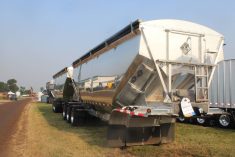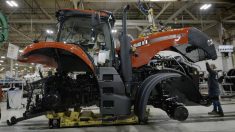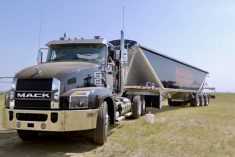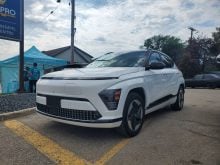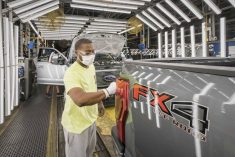Ford’s new 3.5-litre PowerBoost F-150 made its debut this model year, marking the first time a gas-electric hybrid powertrain has ever been available in the F-150. The PowerBoost drivetrain delivers an impressive 430 horsepower and 570 pound-feet of torque, which is the highest torque rating ever for an F-150.
But like all components that appear in new models of trucks and machinery, engineers had to prove the PowerBoost drivetrain was durable enough to hit the market.
“Just because it’s a hybrid doesn’t mean we treated PowerBoost with kid gloves,” said Craig Schmatz, F-150 chief engineer, in a press release. “To earn Built Ford Tough certification, PowerBoost went through the torture testing we put all of our powertrains through. No F-150 powertrain gets a pass — we have one standard for quality and durability.”
Read Also

Claas brings 1000 Series SP forage harvesters to Canada
In mid-August, Claas unveiled its new line of Jaguar forage harvesters at an event in Visalia, California, deep in the heart of that state’s dairy region.
That torture testing included towing fully loaded trailers over desert mountain passes in 100-plus degree (Fahrenheit) temperatures, withstanding rough terrain off-road, tolerating sub-zero temperatures, and enduring high-humidity chambers, salt baths and really bad roads, according to the company.
But on top of the usual procedures, engineers added a durability test specifically for the PowerBoost. Ford built a custom testing machine using “multi-axis hydraulic actuation” (basically a jounce test) to violently shake the powertrain’s 1.5-kilowatt-hour lithium-ion battery — simulating conditions like hitting the worst potholes and washboard roads. Putting the battery through just 82 hours on this machine is the equivalent of 10 years of mechanical torture.
“This thing is like a mechanical bull on steroids,” said Jack Parnoutsoukian, high-voltage application engineer at Ford.
One of the test routes driven by a PowerBoost pickup during R&D was over the Davis Dam in the Mojave Desert of Arizona. It has an 11.4-mile (18.35-kilometre) stretch that climbs 3,500 feet (1,067 metres) with an average six per cent grade and, of course, extreme heat. PowerBoost trucks loaded to the maximum available tow rating of 12,700 pounds (5,761 kilograms) repeatedly climbed and descended the pass to test the full durability of the engine, modular hybrid transmission, cooling systems and towing technologies.
Another test location was at Ford’s Michigan proving grounds. Driven robotically, a PowerBoost travelled over a continuous series of man-made potholed and grooved roads at the Silver Creek test course. Silver Creek includes a dozen distinct types of metal-edged chuckholes repeated for almost a quarter of a mile. Fully loaded to the maximum available payload of 2,120 pounds (962 kilograms), PowerBoost ran the course hundreds of times. That testing location also offers extreme inclines, high-speed ovals and in-water intrusion events for other testing.
All of that, according to Ford, ensures the PowerBoost F-150 can handle what owners would typically subject a pickup to, and survive. Now it’s up to owners to decide if the PowerBoost is as reliable as it should be.




